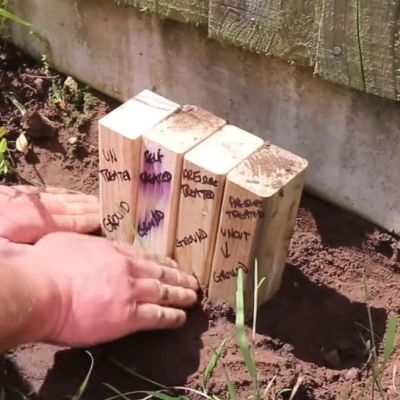 Wood is an amazing material to use around the house, both for its green credentials and the way it looks and feels. That said, as a natural product there are a lot of microorganisms and insects around that would love to take a few good nibbles out of said wood, no matter whether it’s used for fencing, garden furniture or something else. For fencing in particular wood treatments are therefore applied that seek to deter or actively inhibit these organisms, but as the UK bloke over at the [Rag ‘n’ Bone Brown] YouTube channel found out last year, merely slapping on a coating of wood preserver may actually make things worse.
Wood is an amazing material to use around the house, both for its green credentials and the way it looks and feels. That said, as a natural product there are a lot of microorganisms and insects around that would love to take a few good nibbles out of said wood, no matter whether it’s used for fencing, garden furniture or something else. For fencing in particular wood treatments are therefore applied that seek to deter or actively inhibit these organisms, but as the UK bloke over at the [Rag ‘n’ Bone Brown] YouTube channel found out last year, merely slapping on a coating of wood preserver may actually make things worse.
For the experiment three tests were set up, each with an untreated, self-treated and two pressure treated (tanalized) sections. Of the pressure treated wood one had a fresh cut on the exposed side, with each of the three tests focusing on a different scenario.
After three years of these wood cuts having been exposed to being either partially buried in soil, laid on the long side or tossed in a bucket, all while soaking up the splendid wonders of British weather, the results were rather surprising and somewhat confusing. The self-treated wood actually fared worse than the untreated wood, while the pressure treated wood did much better, but as a comment by [davidwx9285] on the video notes, there are many questions regarding how well the pressure treatment is performed.
While the self-treatment gets you generally only a surface coating of the – usually copper-based – compound, the vacuum pressure treatment’s effectiveness depends on how deep the preservative has penetrated, which renders some treated wood unsuitable for being buried in the ground. Along with these factors the video correctly identifies the issue of grain density, which is why hardwoods resist decay much better than e.g. pine. Ultimately it’s quite clear that ‘simply put on a wood preserver’ isn’t quite the magical bullet that it may have seemed to some.
Continue reading “The Confusing World Of Wood Preservation Treatments”


















